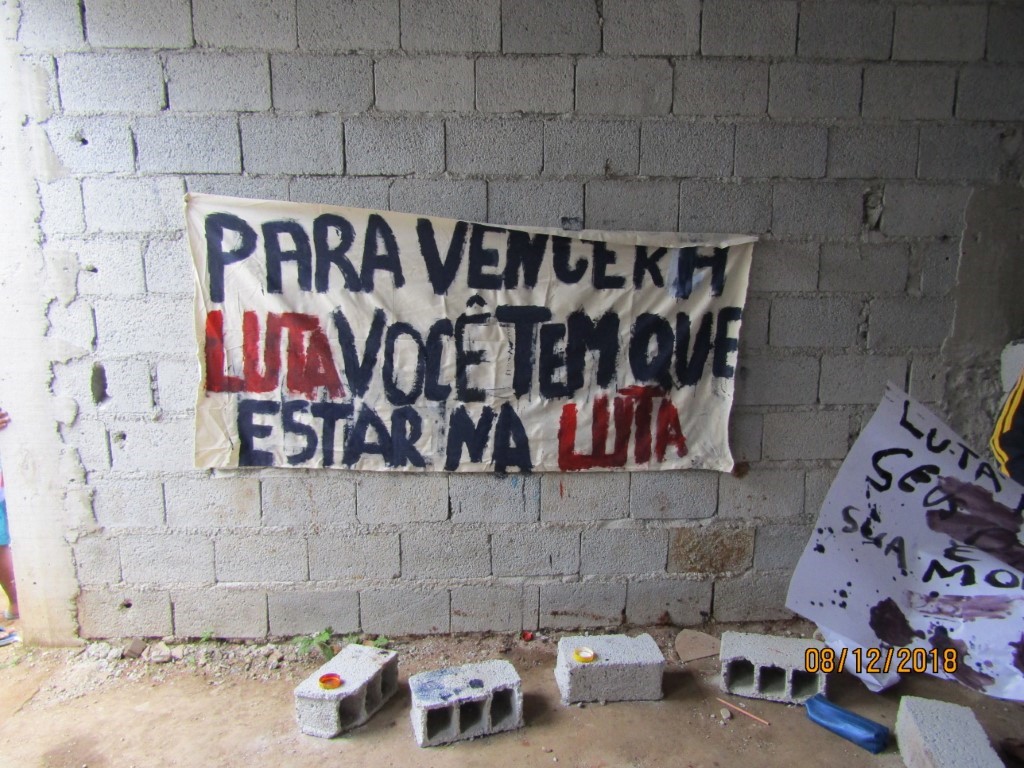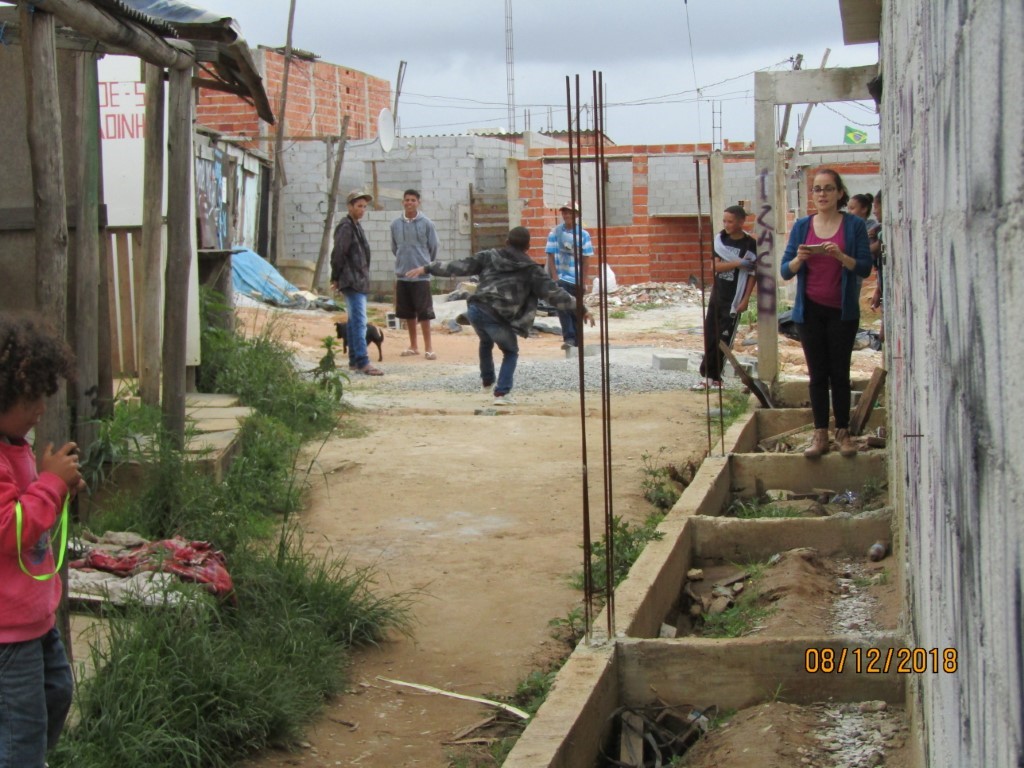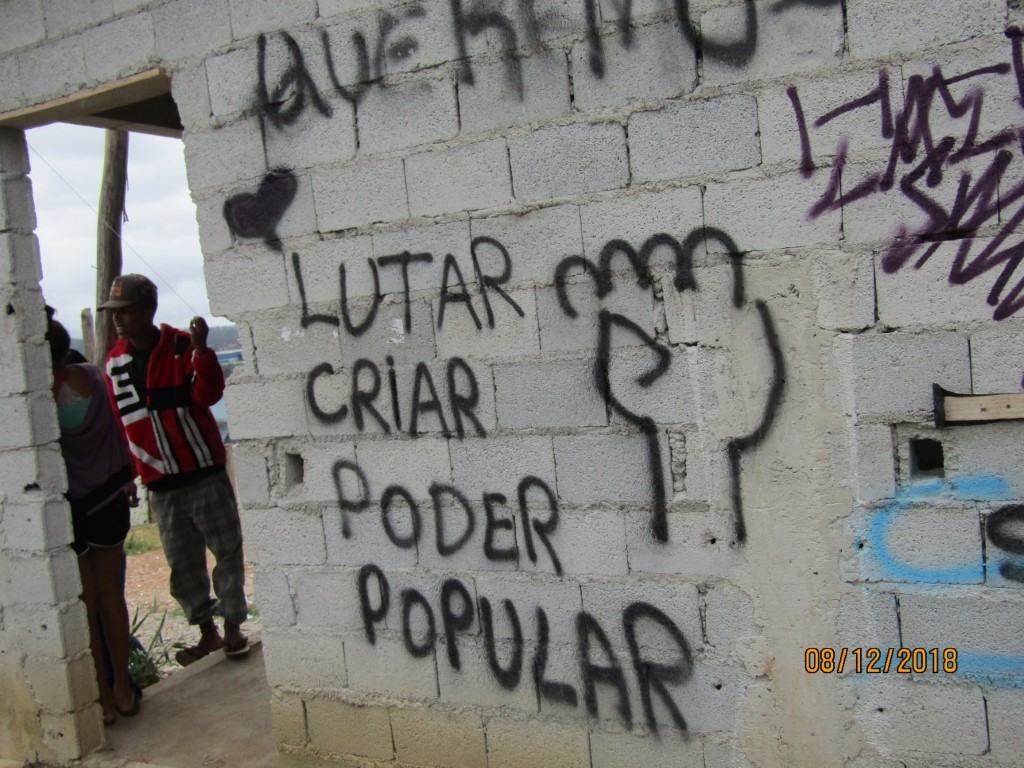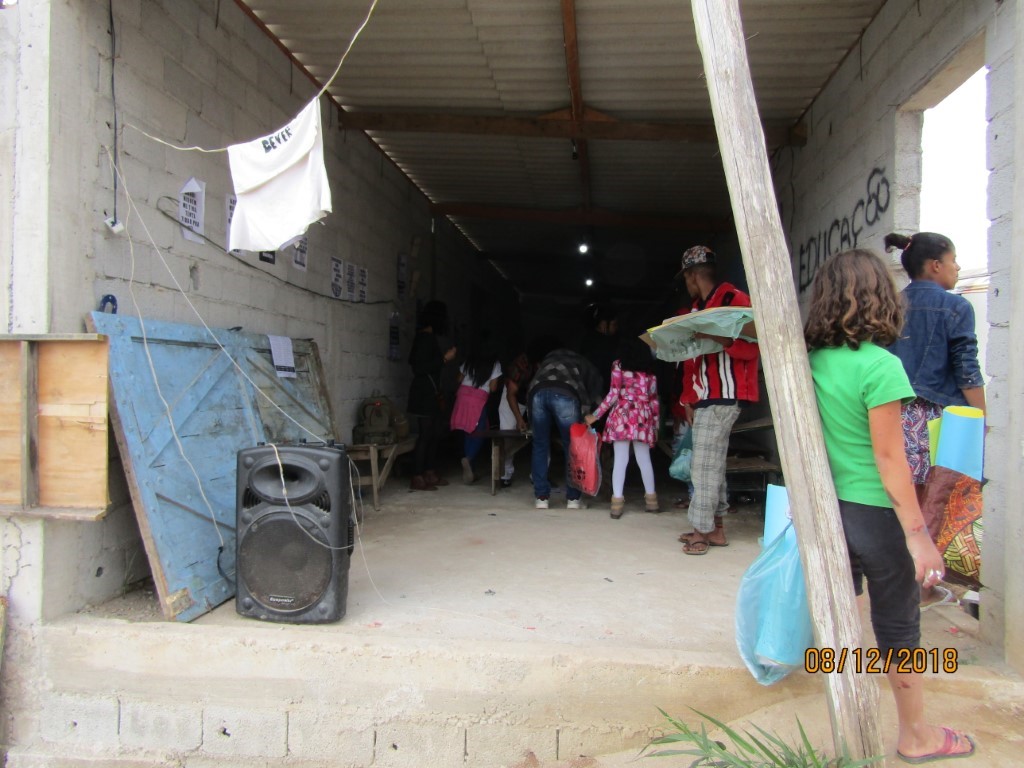occupation
political participation and children
This set of photographs registers practices of elaboration of materials whose main subject is the claiming the right to habitation. It is interesting to observe that this is about an act starred by children. They are present in different contexts and build different ways of participation, some of them unusual to our visions and knowledges related to conceived and accepted ways about what is to participate. But when we say that there is political participation among and with children, from an early age, it requires for us to identify what we understand as political participation, a concept whose complexity requires a lot of attention. In this group, we stick to only address ways of participation in different contexts and social conditions involving groups that are not always considered, such as the children. After all, do they participate politically? This is a motto for future thinking. Our intention with these photos is only to create debates about children and participation in processes of political fights. How can we articulate conceptions of childhood and the representations already built upon kids and what is beyond school activities? To participate is one of the main mottos for learning democratic forms of and in social life, and they express its (lack of) existence. And what about the children? The presence of children in social movements for the fight for land and habitation in different places and various ways is observed. This inspires us to think about citizenship, children and more: the learning and claiming of rights and what comes to be political beings and, in this case, political beings in construction. The photos provoke countless inferences, sensations, reflexions, and are also interested, they show positions taken by whomever chooses and presents them. In his group of photos, the children are central. They are painting and making signs that were going to be used on the next few days, when they were manifesting for the non-eviction of residents from the occupation they live in. They are evoked or, at least, considered. Their capacities of acting towards the change of rules, political settlements and transformation of the current ways of living happens subtly, daily constructed on the relations with adults, mostly women. The photos work as a calling for us to think in a more embracing way about manners, sometimes more, sometimes less apparent or frequent of fight in its potentialities. The way of child participation highlighted here alters rithms and practices on social movements that change some of their topics and/or change others. This matter lacks deep reflections due to its fugacious character, with comprehension still missing from social movements and researchers. We only want this group of photos from a personal archive to be an inflexion point that indicates thoughts about the country and its long and present history of political disputes, that can also be conceived from the children’s point of view, whose involvements and their results occur directly and indirectly. Knowing it’s about a delicate and deep matter, we invite you to look and continue dialogues.




























